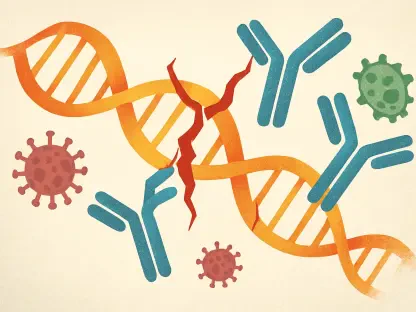Ivan Kairatov is a Biopharma expert with a deep knowledge of technology and innovation in the industry and extensive experience in research and development. In this interview, we delve into the topic of refget Sequence Collections, a new tool developed to increase the efficiency of genomic research.
Can you explain what refget Sequence Collections is and its significance in genomic research?
Refget Sequence Collections is a new data standard designed to streamline the identification and use of reference sequences in genomic research. Its significance lies in its ability to reduce the variability and complexity of reference sequences, which are crucial for understanding genetic variations and disease mechanisms. By ensuring that researchers are consistent in their comparisons, it helps produce more accurate and reproducible results.
How does refget Sequence Collections differ from previous genomic data standards? Why was there a need for this new data standard in the field?
Previous standards often focused on individual sequences, which led to issues when different researchers used slightly different versions of the same reference. Refget Sequence Collections groups these sequences and provides a standardized way to identify them. This development was necessary to eliminate the inconsistencies and inefficiencies that have historically plagued genomic research.
What challenges did you face while developing refget Sequence Collections over the last four years?
One of the major challenges was creating a system capable of accounting for the vast amount of genomic data and the variety of ways reference sequences were used. We encountered unexpected hurdles like ensuring compatibility across various platforms and managing the diverse input from the international collaboration. Overcoming these challenges required continuous refinement and extensive testing.
How does refget Sequence Collections streamline the process of identifying reference sequences for researchers?
Refget Sequence Collections simplifies this process by automatically assigning unique identifiers to sequences, much like a precise catalog system. This avoids the time-consuming and guesswork-driven efforts of manually identifying sequences. As an example, instead of spending hours to ensure their references match, researchers can immediately reference a sequence identifier and move forward with their analysis, leading to more efficient and repeatable results.
Could you elaborate on the comparison involving students with different books, and how it relates to genomic research?
The analogy of students with different books highlights the issue of inconsistency in reference materials. In genomics, slight differences between reference sequences can lead to significant issues in communication and data comparison among researchers. By providing an exact identification for each reference sequence, refget Sequence Collections ensures that all researchers are ‘on the same page,’ therefore fostering better collaboration and accuracy in research.
What impact do you think refget Sequence Collections will have on accelerating medical breakthroughs and the understanding of genetic variations?
It will significantly accelerate the pace of medical breakthroughs by reducing the time and effort needed to verify reference sequences. This streamlining means researchers can focus more on experimentation and analysis rather than preparatory work. In the long term, it will enhance our understanding of genetic variations by providing a robust and reliable framework for comparing different datasets.
How does refget Sequence Collections fit into the existing resources developed by GA4GH?
Refget Sequence Collections complements the other resources developed by GA4GH by providing an organized and standardized approach to reference sequence identification. GA4GH has a range of tools designed to advance genomic research, and this new tool integrates seamlessly with them, enhancing their overall functionality and ensuring a more cohesive research environment.
Can you describe the international collaboration involved in developing this new tool?
The development was a collaborative effort involving experts from multiple prestigious institutions worldwide, each bringing unique expertise to the table. Key collaborators include professionals from EMBL’s European Bioinformatics Institute, ELIXIR Norway, and the Wellcome Sanger Institute. This diverse team worked together to address various aspects of the project, ensuring its success through shared insights and resources.
What future developments or improvements do you foresee for refget Sequence Collections?
In the future, we hope to add more features that facilitate more detailed comparisons and integrations with other genomic resources. One area of interest is expanding its capabilities to handle more complex sequences and improving its user interface to make it even more accessible to researchers at different stages of their careers.
In what ways do you believe this innovation will free up scientists’ time and resources for more advanced discoveries?
By automating the tedious tasks of reference sequence identification, scientists can redirect their time and resources to more innovative and groundbreaking research. This shift means we can expect faster advancements in areas like disease treatment and genetic research, significantly accelerating the overall pace of scientific discovery.
Given your various appointments and roles across different departments and institutions, how has this multidisciplinary approach influenced your work on refget Sequence Collections?
The multidisciplinary approach brought a breadth of perspectives and expertise that was crucial for the project’s success. This collaboration across different fields and departments provided unique insights, from technical innovations to practical applications, enriching the development process and resulting in a more robust and versatile tool.
Do you have any advice for our readers?
Embrace collaboration and multidisciplinary approaches in your research. The most groundbreaking discoveries often come from the intersection of different fields and expertise. Always be open to learning from others and integrating diverse viewpoints to enhance your work.









